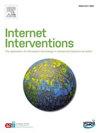The promise and challenges of computer mouse trajectories in DMHIs – A feasibility study on pre-treatment dropout predictions
IF 3.6
2区 医学
Q1 HEALTH CARE SCIENCES & SERVICES
Internet Interventions-The Application of Information Technology in Mental and Behavioural Health
Pub Date : 2025-04-09
DOI:10.1016/j.invent.2025.100828
引用次数: 0
Abstract
With the impetus of Digital Mental Health Interventions (DMHIs), complex data can be leveraged to improve and personalize mental health care. However, most approaches rely on a very limited number of often costly features. Computer mouse trajectories can be unobtrusively and cost-efficiently gathered and seamlessly integrated into current baseline processes. Empirical evidence suggests that mouse movements hold information on user motivation and attention, both valuable aspects otherwise difficult to measure at scale. Further, mouse trajectories can already be collected on pre-treatment questionnaires, making them a promising candidate for early predictions informing treatment allocation. Therefore, this paper discusses how to collect and process mouse trajectory data on questionnaires in DMHIs. Covering different complexity levels, we combine hand-crafted features with non-sequential machine learning models, as well as spatiotemporal raw mouse data with state-of-the-art sequential neural networks. The data processing pipeline for the latter includes task-specific pre-processing to convert the variable length trajectories into a single prediction per user. As a feasibility study, we collected mouse trajectory data from 183 patients filling out a pre-intervention depression questionnaire. While the hand-crafted features slightly improve baseline predictions, the spatiotemporal models underperform. However, considering our small data set size, we propose more research to investigate the potential value of this novel and promising data type and provide the necessary steps and open-source code to do so.
计算机鼠标轨迹在 DMHIs 中的前景与挑战--关于治疗前辍学预测的可行性研究
在数字精神卫生干预(DMHIs)的推动下,可以利用复杂的数据来改善和个性化精神卫生保健。然而,大多数方法依赖于数量非常有限且通常代价高昂的特性。计算机鼠标轨迹可以不显眼地、低成本地收集,并无缝地集成到当前的基线过程中。经验证据表明,鼠标移动包含用户动机和注意力的信息,这两个有价值的方面很难大规模测量。此外,小鼠轨迹已经可以在治疗前问卷中收集到,这使它们成为早期预测治疗分配的有希望的候选者。因此,本文讨论了如何收集和处理DMHIs问卷中的鼠标轨迹数据。为了覆盖不同的复杂程度,我们将手工制作的特征与非顺序机器学习模型相结合,并将时空原始鼠标数据与最先进的顺序神经网络相结合。后者的数据处理管道包括特定于任务的预处理,以将可变长度的轨迹转换为每个用户的单个预测。作为一项可行性研究,我们收集了183名患者的小鼠轨迹数据,这些患者填写了干预前抑郁症问卷。虽然手工制作的特征略微改善了基线预测,但时空模型表现不佳。然而,考虑到我们的数据集规模很小,我们建议进行更多的研究,以调查这种新颖而有前途的数据类型的潜在价值,并提供必要的步骤和开源代码。
本文章由计算机程序翻译,如有差异,请以英文原文为准。
求助全文
约1分钟内获得全文
求助全文
来源期刊

Internet Interventions-The Application of Information Technology in Mental and Behavioural Health
Medicine-Health Informatics
CiteScore
6.50
自引率
9.30%
发文量
94
审稿时长
6 weeks
期刊介绍:
Official Journal of the European Society for Research on Internet Interventions (ESRII) and the International Society for Research on Internet Interventions (ISRII).
The aim of Internet Interventions is to publish scientific, peer-reviewed, high-impact research on Internet interventions and related areas.
Internet Interventions welcomes papers on the following subjects:
• Intervention studies targeting the promotion of mental health and featuring the Internet and/or technologies using the Internet as an underlying technology, e.g. computers, smartphone devices, tablets, sensors
• Implementation and dissemination of Internet interventions
• Integration of Internet interventions into existing systems of care
• Descriptions of development and deployment infrastructures
• Internet intervention methodology and theory papers
• Internet-based epidemiology
• Descriptions of new Internet-based technologies and experiments with clinical applications
• Economics of internet interventions (cost-effectiveness)
• Health care policy and Internet interventions
• The role of culture in Internet intervention
• Internet psychometrics
• Ethical issues pertaining to Internet interventions and measurements
• Human-computer interaction and usability research with clinical implications
• Systematic reviews and meta-analysis on Internet interventions
 求助内容:
求助内容: 应助结果提醒方式:
应助结果提醒方式:


